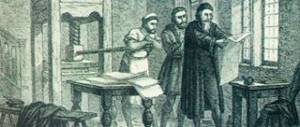Features of project activities
Design and research work at school is a new, innovative method that combines educational and cognitive components, gaming, scientific and creative. The main difference between such activities in primary school is that students, first of all, receive the first research skills, due to which the specific qualities of a special way of thinking develop.
The introduction of the project method in elementary school has its own characteristics. Full-fledged project activities are not suitable for younger students. The main task here is to take into account the characteristics of students (age and psychological).
There is an opinion that in elementary school it is best to limit the project to one or two lessons. Or, do projects in extracurricular activities. Before embarking on full-fledged projects, students should first be trained to solve design problems. During such a task, schoolchildren receive a ready-made set of tasks. Project tasks are collective in nature and can become the first step towards children mastering the basics of project activity.
Video about how junior schoolchildren carry out project activities in one of the gymnasiums
Stages of project activity
When starting to work on a project, it is better to focus on the plan, which usually consists of the following stages:
- Definition of the problem. Here it is important to identify a relevant problem for research, which would correspond to the age, abilities and knowledge of younger schoolchildren, and would be interesting for children.
- Definition of goals and objectives. The teacher helps children determine the goals of the study and direct them to achieve results.
- Preparation and planning. Here it is important to help the student choose the form for completing the project in accordance with the topic, as well as determine the means and methods of organizing the activity. It is also important to determine how long the project will take to complete. If this is a group project, then the teacher must form initiative (working) groups of students who will work together on the project. It is important to guide students in finding the necessary materials and help them process information.
- Project implementation. Work on a project always begins with collecting information, analysis (discussion), and putting forward ideas. As soon as the necessary information has been collected and all experimental work has been carried out, the project is formalized. At this stage, the teacher must provide consulting assistance to students, teach them to analyze and summarize facts, teach design and presentation, if necessary, find ways to stimulate their interest in the creative process, and develop mental abilities. It is also necessary to check the intermediate results of the project work.
- Summarizing. The outcome of the project is a presentation. It can take the form of designing wall newspapers or stands, giving a presentation, preparing a report, or defending a project. It is advisable to discuss what worked and what didn’t, what problems arose while working on the project.
"Advice. Pay special attention to the presentation of results. Tell your children how to properly speak in front of an audience.”
Organization of project activities
One of the important aspects of project activity is its organization.
Before starting project work with primary school students, the teacher must:
- to introduce schoolchildren to the methods of scientific knowledge in an accessible form
- teach students to cooperate with each other
- use an individual approach when working with students
- try to organize different types of research, including collective research, right in class
- assign homework assignments of a research and creative nature.
When organizing project activities in elementary school, the teacher needs to take into account the following aspects:
- The project assignment must correspond to the age and level of development of the primary school student.
- The issues of future projects should be taken into account, which should be in the area of interest of the students.
- Conditions must be created for the successful execution of projects (availability of materials, data, multimedia).
- Before giving students a project assignment, you should first prepare for conducting such activities.
- Manage projects, help and advise students.
- To practice the techniques of project activities with younger schoolchildren, while improving general educational skills.
- When choosing a project topic, do not impose information, but interest them, motivating them to search on their own.
- Discuss with students the choice of sources of information: library, reference books, Internet, periodicals, etc.
In the process of preparing for project activities, it is advisable to organize joint excursions, walks, observations, experiments, and events for younger schoolchildren.
Goals of project-based educational technology
- creation of appropriate conditions that promote the activation of cognitive interest and independent acquisition of knowledge from various sources
- developing the ability to use knowledge to solve cognitive problems
- development of communication and research skills
- active development of thinking.
Design and research work is carried out by students independently, subject to cooperation with a teacher who leads and controls the creative and cognitive process. As a result of such creative work, a “project” is obtained - a product created to solve a given problem, a detailed study of the problem.
So, the project-research method is a new innovative teaching method based on the child’s natural desire to comprehend the world that surrounds him, as a result of which the student’s cognitive sphere, his ability to think deeply and independently, and to be creative in his activities are developed.







